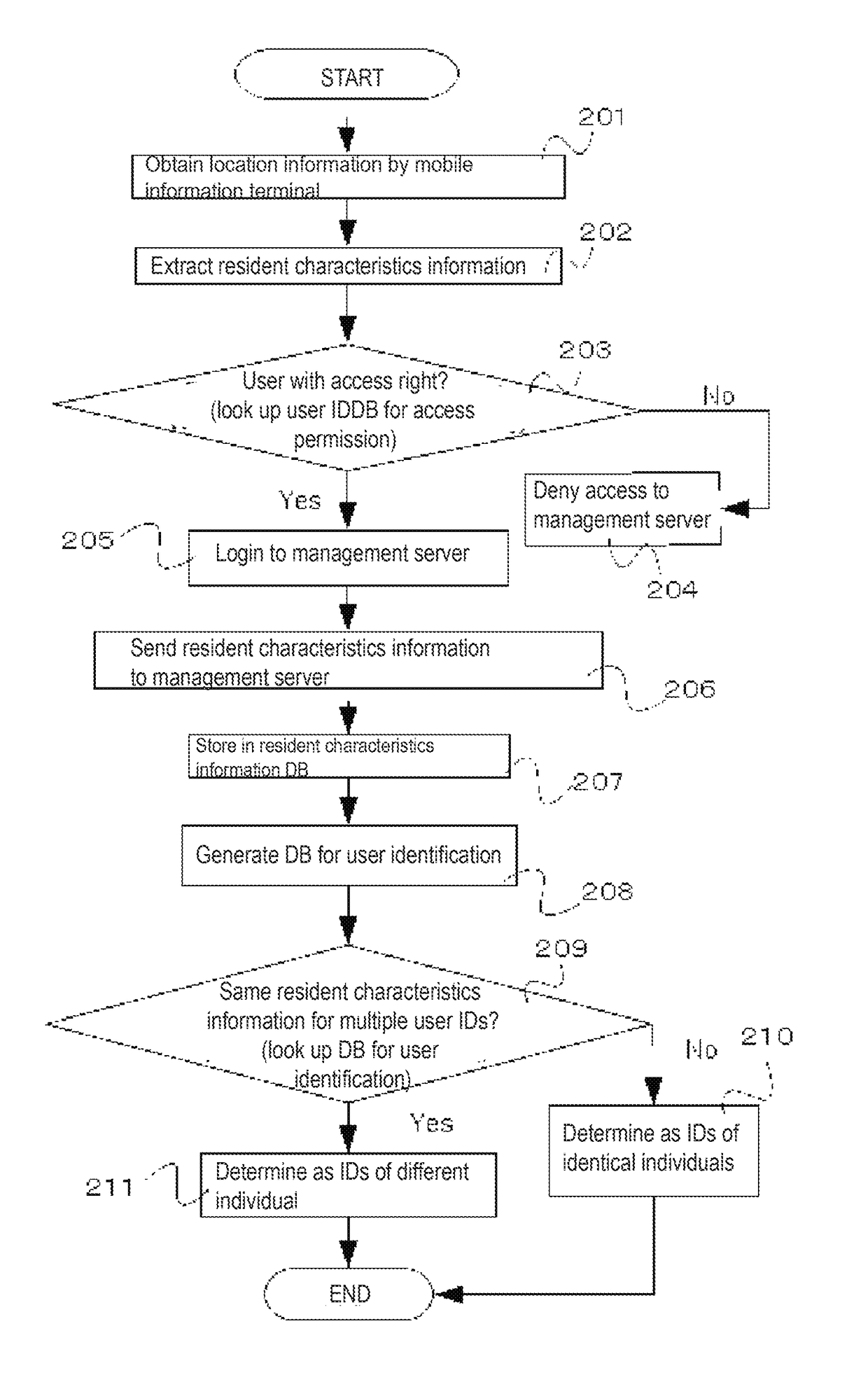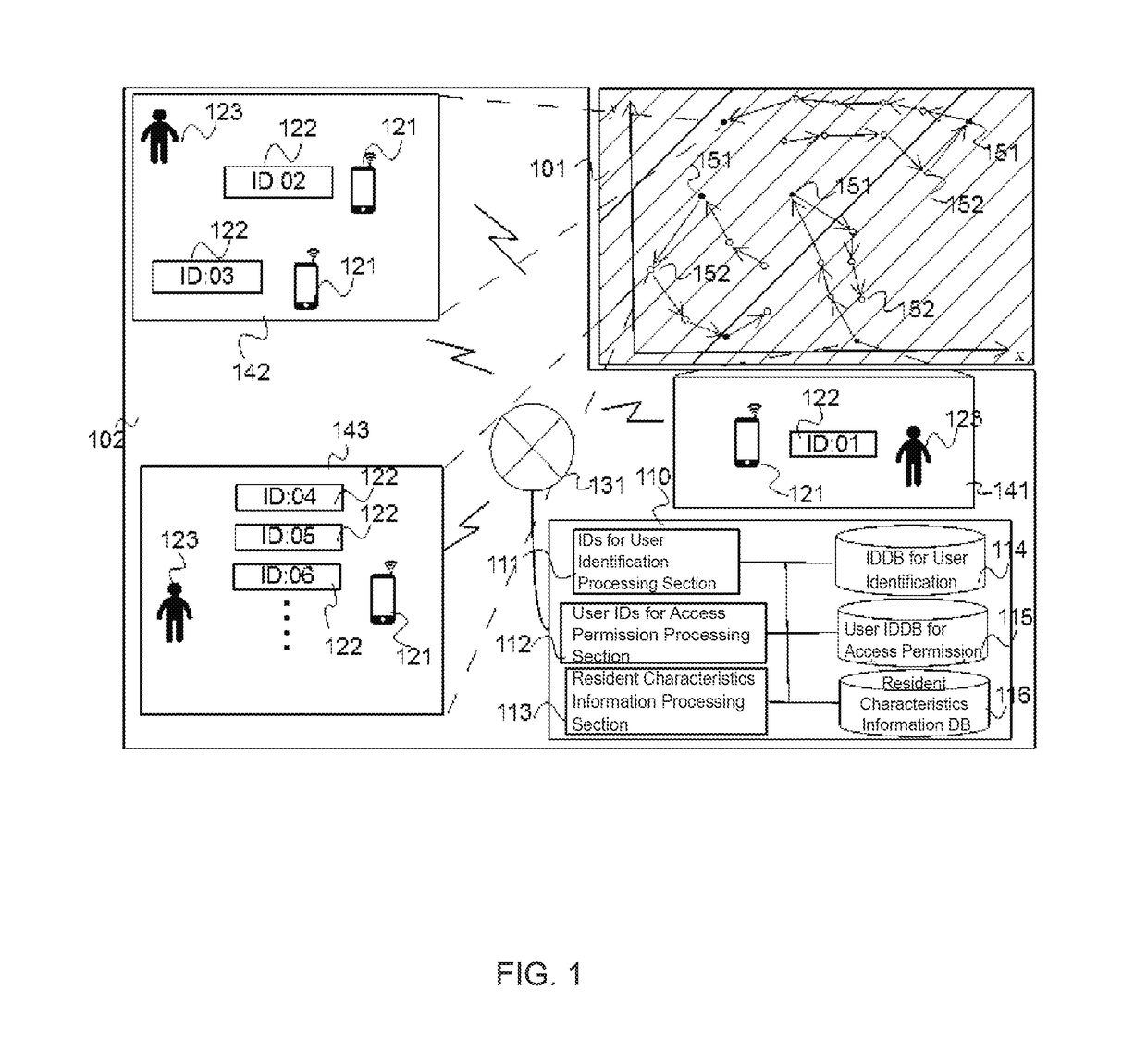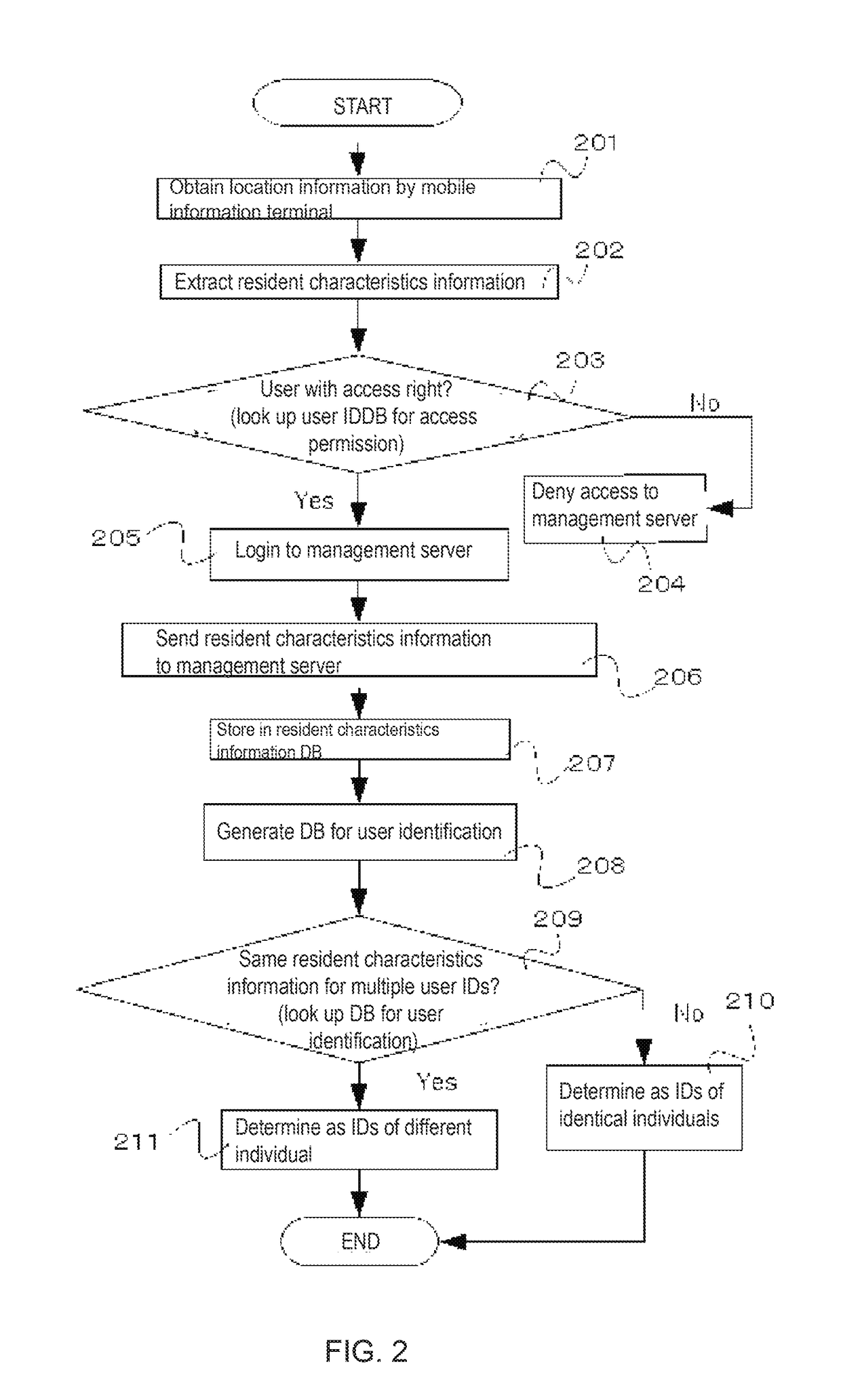System and method for processing personal identification information based on position information
a technology of position information and system, applied in the field of individual identification information processing system, individual identification information processing method, computer program storage media, etc., can solve the problems of affecting the growth of registered user base, users can register themselves with incorrect information, and it is difficult to correctly identify individuals as users
- Summary
- Abstract
- Description
- Claims
- Application Information
AI Technical Summary
Benefits of technology
Problems solved by technology
Method used
Image
Examples
first embodiment
of the Present Invention
[0160]First, an individual identification information processing system based on resident characteristics information will be described below.
[0161]A section 101 of FIG. 1 (shaded section in FIG. 1) shows a conceptual diagram of location (position) information recorded when an individual 123 moves in real space with a mobile information terminal (hereinafter, referred to “mobile information terminal”), wherein the individual 123 is a user of the mobile information terminal which uses a network service; and a section 102 of FIG. 1 (sections other than the shaded section in FIG. 1) shows a conceptual diagram of the individual identification information processing system based on the resident characteristics information.
[0162]The individual identification information processing system comprises a large number of mobile information terminals 121 each connected with a communication network 131, and a management server 110 connected to the mobile information termin...
second embodiment
of the Present Invention
[0177]Next, an individual identification system will be described below, wherein this system extracts the resident characteristics information, which is the location information for the resident state, and identifies an individual as a user, in an example where an individual as a user uses a mobile information terminal utilizing a network service and has a behavior of living in a residence and working at a predetermined workplace.
[0178]When the individual carrying the mobile information terminal spends time at his / her home or workplace, detecting the individual's location information using the mobile information terminal allows recording of the individual's resident characteristics information using the resident state of the mobile information terminal. Almost all individuals carrying and using a mobile information terminal exhibit the resident state at their respective particular domiciles. Also, they often exhibit the resident state at their respective work...
third embodiment
of the Present Invention
[0204]Next, an individual identification information processing system based on dynamic characteristics information will be described below.
[0205]A section 1101 of FIG. 11 (shaded section FIG. 11) shows a conceptual diagram of location information where a plurality of individuals 1123 as users of mobile information terminals exist almost simultaneously in the real space. The location information of each user almost at identical time is indicated with 1151-1153. A section 1102 of FIG. 11 (sections other than the shaded section in FIG. 11) shows a conceptual diagram of the individual identification information processing system based on the dynamic characteristics information.
[0206]The individual identification information processing system comprises a large number of mobile information terminals 1121 each connected with a communication network 1131, and a management server 1110 connected to the mobile information terminals 1121 via the communication network 11...
PUM
 Login to View More
Login to View More Abstract
Description
Claims
Application Information
 Login to View More
Login to View More - R&D
- Intellectual Property
- Life Sciences
- Materials
- Tech Scout
- Unparalleled Data Quality
- Higher Quality Content
- 60% Fewer Hallucinations
Browse by: Latest US Patents, China's latest patents, Technical Efficacy Thesaurus, Application Domain, Technology Topic, Popular Technical Reports.
© 2025 PatSnap. All rights reserved.Legal|Privacy policy|Modern Slavery Act Transparency Statement|Sitemap|About US| Contact US: help@patsnap.com



